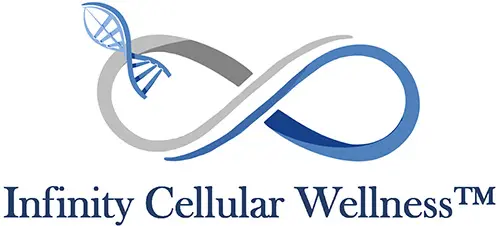Stem Cell Therapy for Traumatic Brain Injury
How Do Stem Cells Improve or Repair Traumatic Brain Injury?
Stem cells can potentially repair traumatic brain injuries by migrating to the damaged area, differentiating into new neurons and glial cells to replace lost tissue, releasing growth factors that promote regeneration of existing cells, and modulating the inflammatory response, thereby helping to improve neurological function and potentially reduce further damage to the brain tissue. [1, 2, 3, 4, 5]
Unlock the potential of stem cell therapy for traumatic brain injuries at Infinity Cellular Wellness. Located just 20 minutes from San Diego in Tijuana, our cutting-edge treatments aim to improve neurological function and support recovery. Take the first step toward healing today—call us at 877-877-3339 or request a consultation through our secure online form.
Key mechanisms of stem cell repair in TBI: [3, 4, 6]
- Cell replacement: Stem cells, particularly neural stem cells, can differentiate into neurons, astrocytes, and oligodendrocytes, replacing damaged cells in the injured brain region. [3, 4, 6]
- Growth factor secretion: Stem cells release various growth factors like brain-derived neurotrophic factor (BDNF) and glial-derived neurotrophic factor (GDNF), which stimulate the survival, growth, and differentiation of existing neurons. [3, 4, 5]
- Anti-inflammatory effects: Stem cells can suppress the inflammatory response that occurs after brain injury by modulating immune cells and reducing the production of pro-inflammatory cytokines. [1, 4, 5]
- Angiogenesis promotion: Stem cells can promote the formation of new blood vessels in the damaged area, improving blood supply and oxygen delivery to the brain tissue. [1, 5, 7]
Types of stem cells used for TBI treatment: [1, 5, 7]
- Mesenchymal stem cells (MSCs): These are commonly studied due to their ability to cross the blood-brain barrier, migrate to the injury site, and have potent anti-inflammatory properties. [1, 5, 7]
- Neural stem cells (NSCs): These cells have the potential to directly differentiate into new neurons and glial cells, making them particularly attractive for replacing lost brain tissue. [3, 4, 6]
- Induced pluripotent stem cells (iPSCs): These are adult cells reprogrammed to a stem cell-like state, which can be differentiated into various cell types depending on the need. [1, 8]
Important considerations: [4, 5, 9]
- Clinical trials are ongoing: While research shows promising results in animal models, stem cell therapy for TBI is still in the early stages of clinical trials. [4, 5, 9]
- Delivery methods: Researchers are exploring different ways to deliver stem cells to the brain, including direct injection into the injured area or systemic administration. [1, 3, 4]
- Immune response: Potential concerns include immune rejection of transplanted stem cells, which may require immunosuppressive treatments. [1, 5, 9]
Schedule a Stem Cell Therapy Consultation
Your journey to advanced recovery begins here at Infinity Cellular Wellness. Don’t wait to explore the transformative possibilities of stem cell therapy for TBI. Call us now at 877-877-3339 or schedule your appointment through our secure online form . Discover the future of healing just 20 minutes from San Diego!
Sources:
[1] https://pmc.ncbi.nlm.nih.gov/articles/PMC10573043/
[3] https://www.ncbi.nlm.nih.gov/books/NBK299210/
[4] https://www.frontiersin.org/journals/cellular-neuroscience/articles/10.3389/fncel.2019.00301/full
[5] https://www.boulderbiologics.com/stem-cell-therapy-3
[6] https://pmc.ncbi.nlm.nih.gov/articles/PMC3068820/
[7] https://pmc.ncbi.nlm.nih.gov/articles/PMC3721356/
